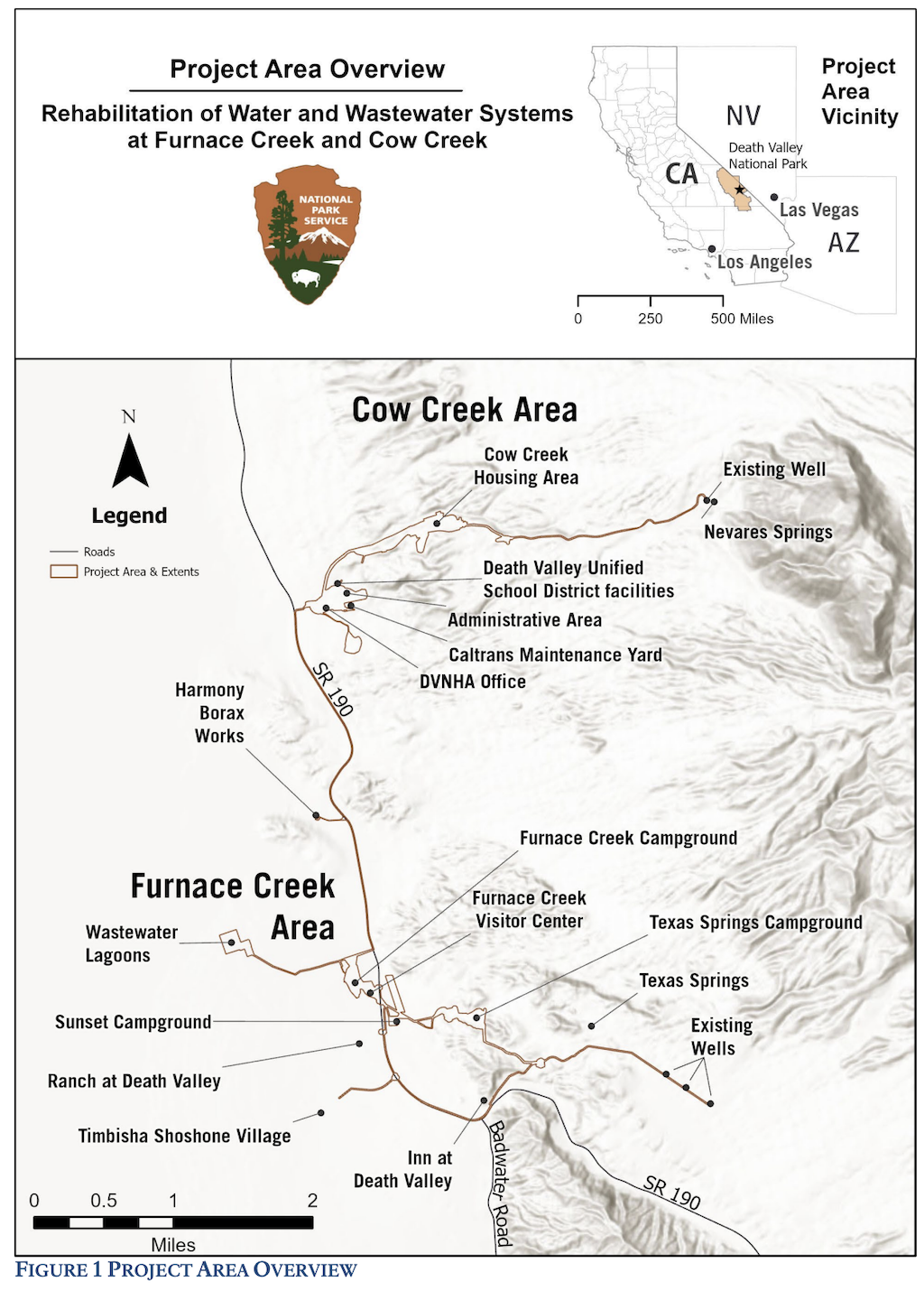
Death Valley National Park is planning to rehabilitate two water systems/NPS graphic
Two water systems in Death Valley National Park that are in a state of failure would be rehabilitated under a plan the National Park Service is seeking public comment on.
According to park documents, the water and wastewater systems in Furnace Creek and Cow Creek in the park "are deteriorating rapidly and are in a state of failure. Operational issues include water pipes that are past life expectancy, exceedances of the permitted wastewater lagoon inflow capacity (80,000 gpd), leaking air release and blow-off valves, antiquated components and design which make repairs difficult, and poor security which could lead to injuries or a compromised water system. Furthermore, harsh environmental factors such as extreme heat and dryness, mineralized water, and seismic activity accelerate the deterioration of this aging infrastructure."
In their current condition, the two systems "malfunction several times a month," according to Death Valley staff. "NPS staff repaired Death Valley’s water systems 32 times in 2023 and 67 times in 2022. They repaired the park’s wastewater systems 12 times in 2023 and 15 times in 2022. Some of these failures released untreated sewage into the park."
The Furnace Creek and Cow Creek utility systems are the park’s largest utilities. They serve 1.7 million visitors per year and about 450 residents. This project would include water service to Timbisha Shoshone Village, The Oasis at Death Valley, campgrounds and visitor center in Furnace Creek, and NPS housing and offices in Cow Creek. Construction, if the proposal is approved, would be anticipated to start in 2025.
The proposed improvements would add redundancy into the water systems so that potable water service can continue if there is a break in one section of a water main pipe. The systems are designed to support anticipated future visitation levels and potential future facilities. Modifications would protect natural resources by reducing sewage spills and reducing water loss from pipe leaks and breaks.
The systems would be upgraded to meet regulatory requirements. Features would be added to make work safer for NPS utility operators.
A draft environmental assessment on the proposed work can be found at this page, and comments can be left there, too.



Add comment